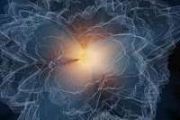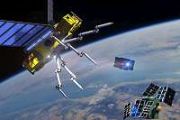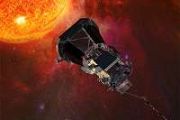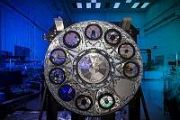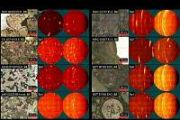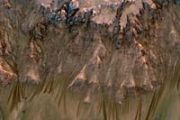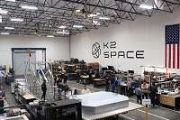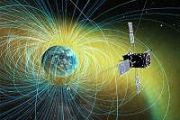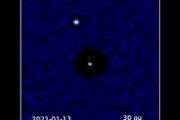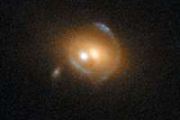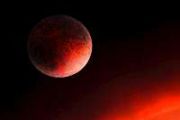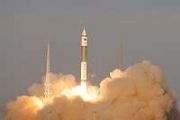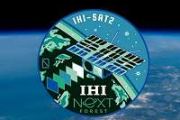
Copernical Team
Vigil: ESA’s space weather reporter in deep space
 Video:
00:01:51
Video:
00:01:51
Space weather ‘reporter’ Vigil will be the world’s first space weather mission to be permanently positioned at Lagrange point 5, a unique vantage point that allows us to see solar activity days before it reaches Earth. ESA’s Vigil mission will be a dedicated operational space weather mission, sending data 24/7 from deep space.
Vigil’s tools as a space weather reporter at its unique location in deep space will drastically improve forecasting abilities. From there, Vigil can see ‘around the corner’ of the Sun and observe activity on the surface of the Sun days before it rotates into
Largest piece of Mars on Earth fetches meteoric $5.3 million at New York auction
This request seems a bit unusual, so we need to confirm that you're human. Please press and hold the button until it turns completely green. Thank you for your cooperation!
Press and hold the button
If you believe this is an error, please contact our support team.
185.132.36.159 : f4cb4a9c-8bf7-4573-93e9-07ad9314
Video: Earth views from Cupola during Ignis mission
This request seems a bit unusual, so we need to confirm that you're human. Please press and hold the button until it turns completely green. Thank you for your cooperation!
Press and hold the button
If you believe this is an error, please contact our support team.
185.132.36.159 : 992ba2cb-d258-41f9-9735-3679e4da
NASA's SpaceX Crew-11 mission gears up for space station research
This request seems a bit unusual, so we need to confirm that you're human. Please press and hold the button until it turns completely green. Thank you for your cooperation!
Press and hold the button
If you believe this is an error, please contact our support team.
185.132.36.159 : 39aa2fea-3029-430d-9b1a-ab44172b
How space research is advancing health on Earth and beyond

Artificial solar eclipses in space could shed light on Sun
 Recreating artificial solar eclipses in space could help astronomers decipher the inner workings of our Sun much quicker than if they had to wait for the celestial show on Earth.
The plan, part of a UK-led space mission to be unveiled at the Royal Astronomical Society's National Astronomy Meeting 2025 in Durham, would involve the use of a mini-satellite and the Moon's shadow to achieve the
Recreating artificial solar eclipses in space could help astronomers decipher the inner workings of our Sun much quicker than if they had to wait for the celestial show on Earth.
The plan, part of a UK-led space mission to be unveiled at the Royal Astronomical Society's National Astronomy Meeting 2025 in Durham, would involve the use of a mini-satellite and the Moon's shadow to achieve the Helicity barrier discovery sheds light on how solar plasma heats and flows
 Scientists have obtained the clearest evidence yet for a long-theorized mechanism that alters how energy is dissipated in the Sun's atmosphere, helping explain the high temperatures and rapid acceleration of the solar wind. Drawing on data from NASA's Parker Solar Probe, researchers investigated how turbulent energy behaves in the collisionless plasma near the Sun.
The study reveals that a
Scientists have obtained the clearest evidence yet for a long-theorized mechanism that alters how energy is dissipated in the Sun's atmosphere, helping explain the high temperatures and rapid acceleration of the solar wind. Drawing on data from NASA's Parker Solar Probe, researchers investigated how turbulent energy behaves in the collisionless plasma near the Sun.
The study reveals that a BlackSky expands Gen-3 access to bolster Ukraine-focused intelligence operations
 BlackSky Technology Inc. (NYSE: BKSY) has signed an early access agreement for its next-generation Gen-3 satellite system with an existing international Gen-2 customer, expanding support for Ukraine. The agreement upgrades the customer's current services with very high-resolution Gen-3 imagery alongside Gen-2's rapid, low-latency data stream.
"This important contract demonstrates the power
BlackSky Technology Inc. (NYSE: BKSY) has signed an early access agreement for its next-generation Gen-3 satellite system with an existing international Gen-2 customer, expanding support for Ukraine. The agreement upgrades the customer's current services with very high-resolution Gen-3 imagery alongside Gen-2's rapid, low-latency data stream.
"This important contract demonstrates the power Life on Venus? UK probe could reveal the answer
 The answer to whether tiny bacterial lifeforms really do exist in the clouds of Venus could be revealed once-and-for-all by a UK-backed mission.
Over the past five years researchers have detected the presence of two potential biomarkers - the gases phosphine and ammonia - which on Earth can only be produced by biological activity and industrial processes.
Their existence in the Venus
The answer to whether tiny bacterial lifeforms really do exist in the clouds of Venus could be revealed once-and-for-all by a UK-backed mission.
Over the past five years researchers have detected the presence of two potential biomarkers - the gases phosphine and ammonia - which on Earth can only be produced by biological activity and industrial processes.
Their existence in the Venus Cold atom experiment validates Fermi acceleration predicted in cosmic ray theory
 Scientists have achieved a major milestone in astrophysics by recreating a process theorized over 70 years ago: Fermi acceleration, the key mechanism behind cosmic ray generation. Using ultracold atoms and engineered optical barriers, researchers successfully built a controllable particle accelerator just 100 micrometres wide.
The experiment, conducted by scientists from the Universities o
Scientists have achieved a major milestone in astrophysics by recreating a process theorized over 70 years ago: Fermi acceleration, the key mechanism behind cosmic ray generation. Using ultracold atoms and engineered optical barriers, researchers successfully built a controllable particle accelerator just 100 micrometres wide.
The experiment, conducted by scientists from the Universities o 



